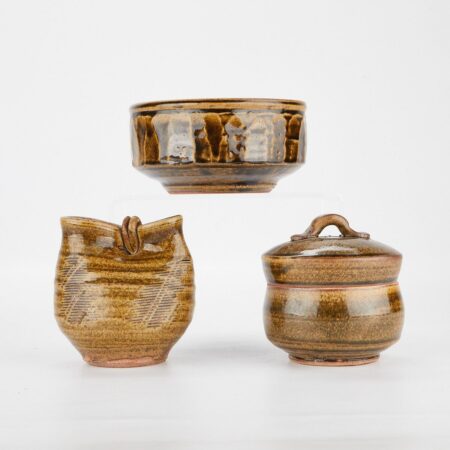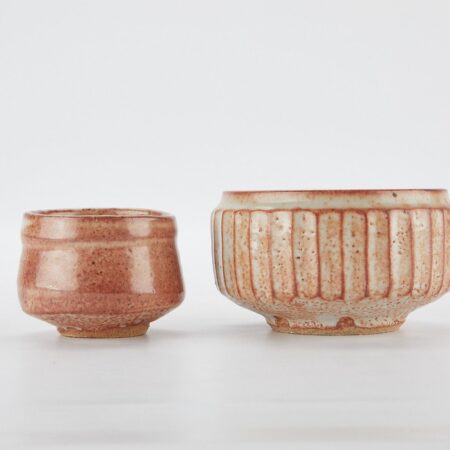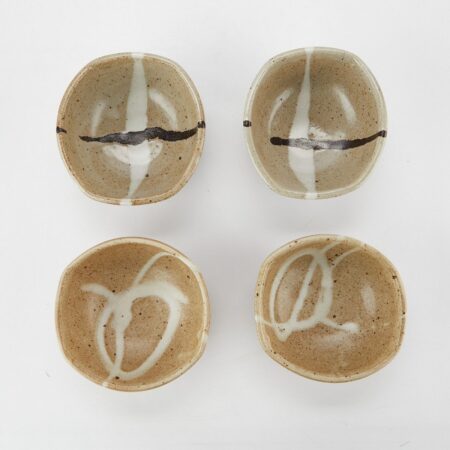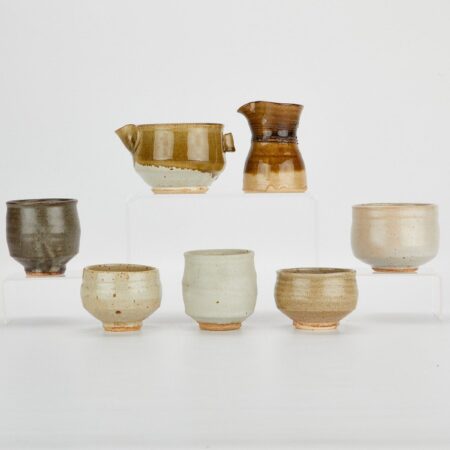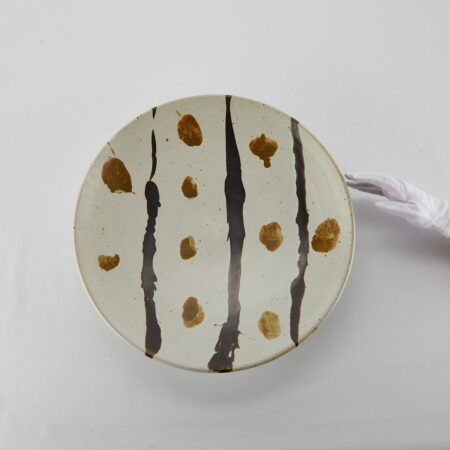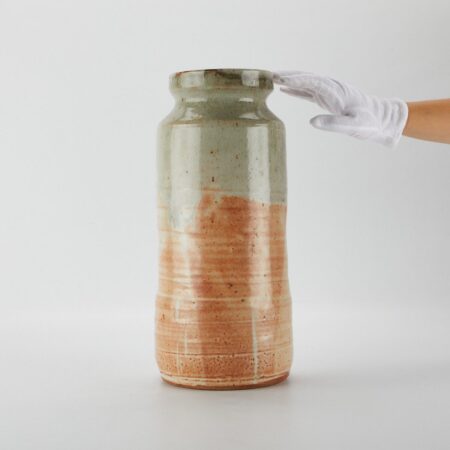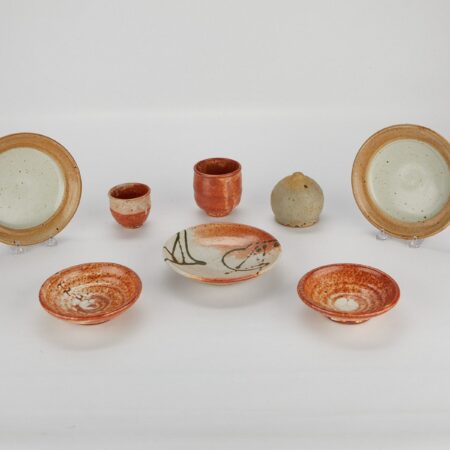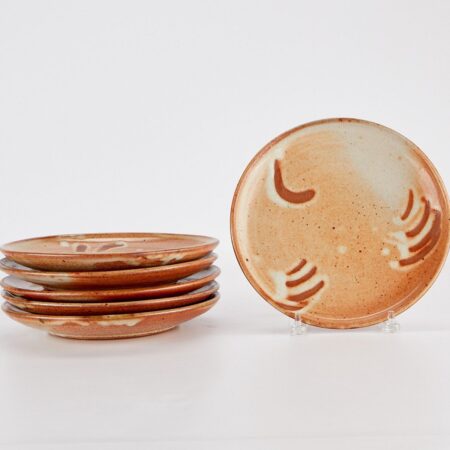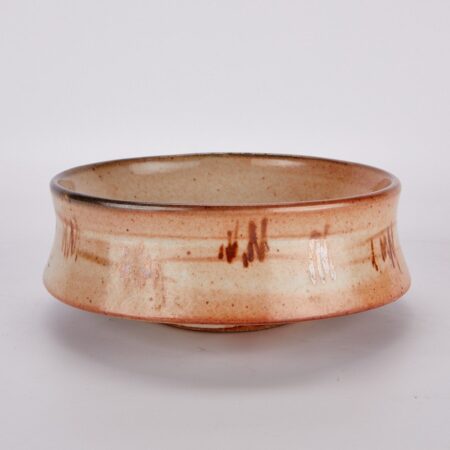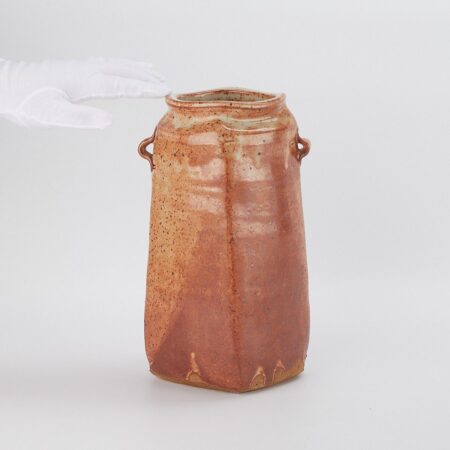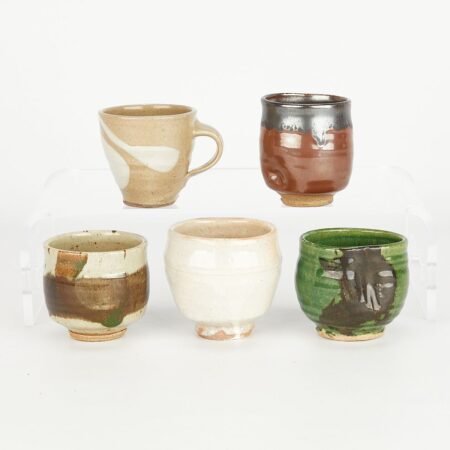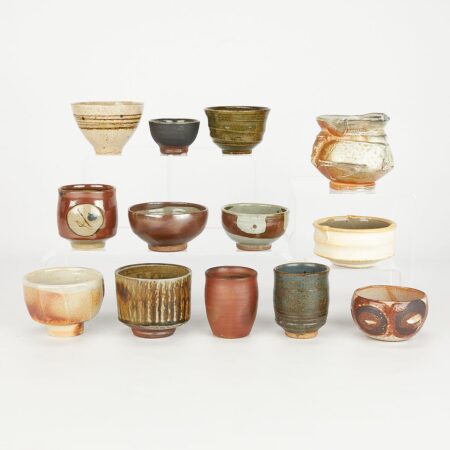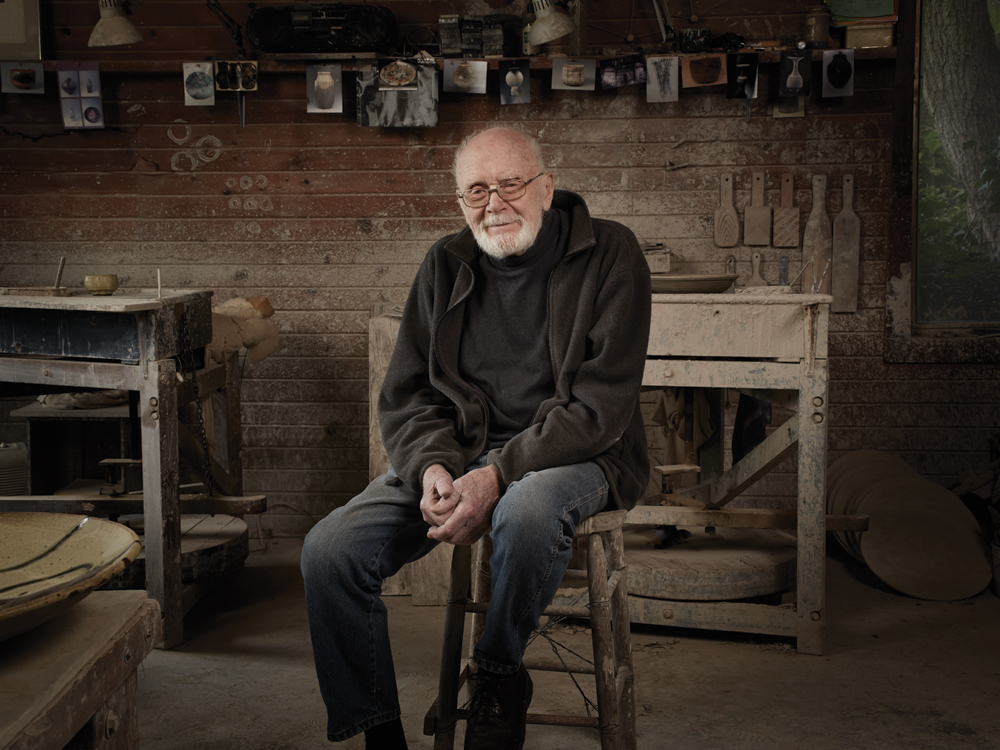
Warren MacKenzie
United States
1924-2018
Interested in selling a piece by Warren MacKenzie?
We have received top dollar for Warren MacKenzie works. Auction is the best way to quickly and transparently get maximum dollar for your artwork.
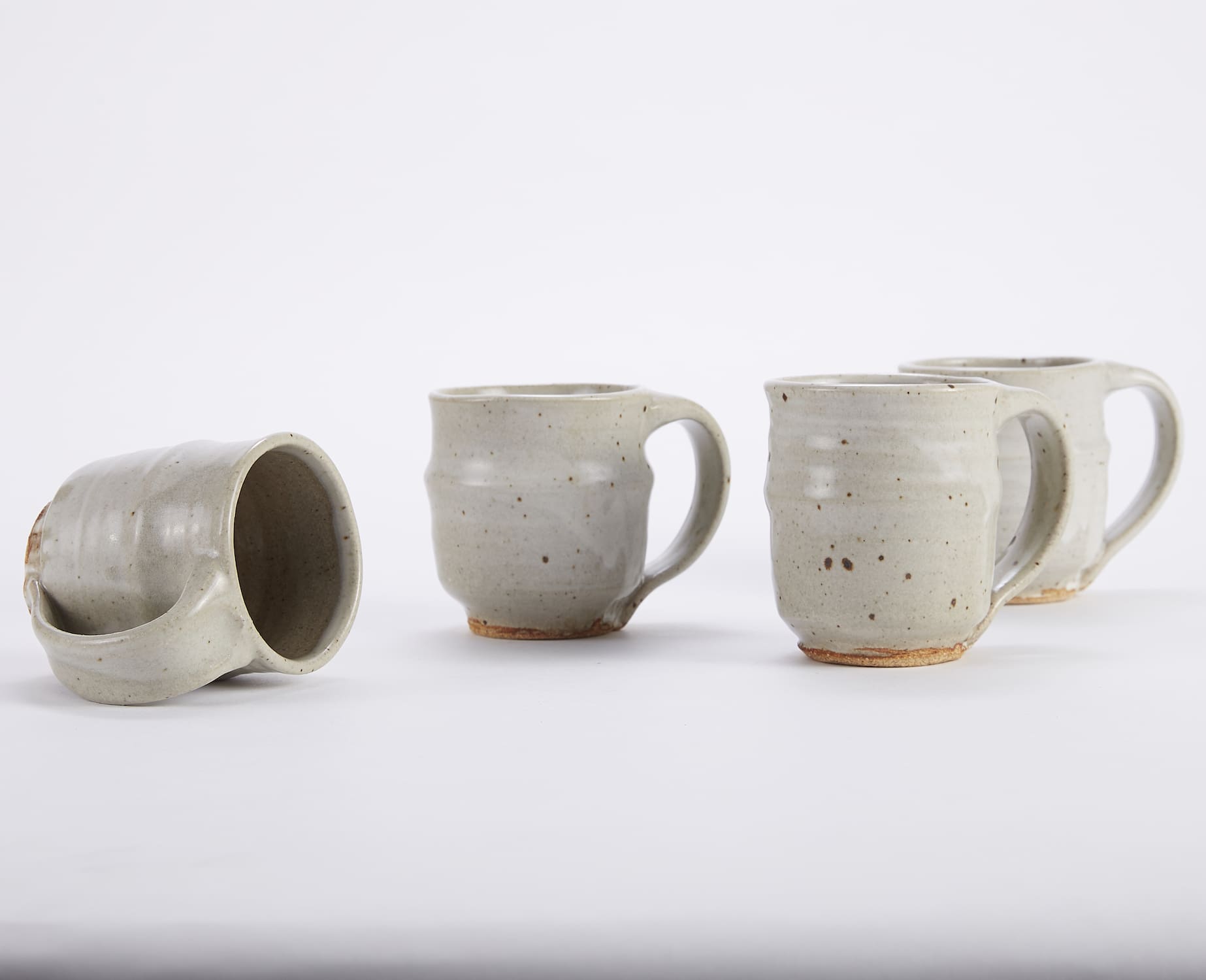
MacKenzie’s pieces, while beautiful, also served a functional purpose, such as these mugs. Warren MacKenzie (1924-2018), Set of Four Mugs, sold for $480 in American Studio Ceramics and Fine Estates Auction, July 18, 2019.
Warren MacKenzie and Mingei in Context
The artistic and philosophical movement with which MacKenzie is most associated is the Mingei movement. Mingei, or “folk-craft,” was a philosophical movement started by Japanese thinker Yanagi Soetsu in the early 1920s. Its basic ideals centered around the elevation of traditional anonymous craftsmen and the handmade crafts they created. Yanagi extolled these simple handmade objects for their humble beauty, along with their “honesty with regards to their intended use.” In many ways, this movement was an attempt by Yanagi to create a new national artistic identity based around the arts of the people as opposed to the highly decorative art created for and by the cultural elites. However, his influences were wider ranging than simply historic or traditional Japanese crafts, and included Korean ceramics and the Anglo-American Arts and Crafts Movement. While Mingei encompassed many types of crafts, ceramics were always at the forefront, in a large part because Yanagi’s closest collaborators were ceramic artists, most notably Shoji Hamada.
In keeping with this, Mingei as an ideology and a movement first made its official entry into the Western mindset through ceramics. English potter Bernard Leach spent his early childhood in Asia with his father, a British colonial judge. He returned to England to complete his schooling, eventually taking a course on etching and decided to return to Asia to teach etching there. He settled in Tokyo, where he was introduced to traditional Japanese pottery making methods. He was fascinated by what he saw, and became determined to learn as much as he could about potting. Soon, he met and became friends with Yanagi Soetsu and Hamada Shoji, who introduced him to Mingei and their philosophies about crafts.
Bernard Leach brought these ideas back to Britain with him, and published them in English for the first time in a translation of Yanagi’s The Unknown Craftsman, and later in A Potter’s Book, the book that had so inspired MacKenzie and his college classmates. In many ways, Leach did not live by Mingei ideals–he was a famous artist, far from an anonymous craftsman, and he even expressed irritation with being constantly tied to Mingei toward the end of his career. However, throughout his career, he remained dedicated to functional pottery, and alongside his writings, he propagated the art form through apprenticeships, shows, and even the widespread use of his pots.
In training with Leach and Hamada, MacKenzie picked up many of the ideas that defined their views on ceramics. He also played a pivotal role in introducing these ideas to an American audience, through the 1953 lecture tour he had arranged for Leach, Yanagi, and Hamada, which is credited with the midcentury surge of interest for Mingei in the United States, as well as through his own teaching. Of course, he took his own approach to the Mingei idea, as had Hamada and Leach before him. In MacKenzie’s case, he felt geography was a major defining feature. Just as he felt Leach’s pots were extremely English, he saw his own pots as fundamentally American: “I don’t imitate Japanese pottery, and the Japanese people who I’ve known are well aware of this fact. They say, ‘Oh no, your pots are American pots; they’re not Japanese pots,’ even with a strong influence. Now, why it happens, I don’t know, but I think it’s something to do with the fact that I just live in America. I’ve said before, and I’ve repeated, that I think my pots are Midwestern pots.”
The America to which MacKenzie helped bring Mingei was one with a growing awareness of studio ceramics. In the postwar period when MacKenzie was beginning his exploration of studio ceramics, the craft was enjoying a swell of popularity for non-professionals, in part as a form of therapy for soldiers struggling with the illness we now know as PTSD. Industrialization was increasing, but so was pushback against it: owning handmade ceramics became a symbol for a pre-war, simpler, peaceful past. Educational opportunities for potters increased throughout the 1940s, with ceramics programs being offered at growing numbers of universities. Some of these programs emphasized ceramic sculpture, while others emphasized pottery as a production craft. While many ceramicists were already familiar with Leach’s A Potter’s Book, Leach, Hamada, and Yanagi’s visit nevertheless proved electrifying for the still-nascent ceramics scene in the 1950s United States, solidifying the place of Mingei in the American ceramics canon.
In keeping with this popularity, it should be noted that MacKenzie was not the only American working in a Mingei tradition. Many potters throughout the United States were influenced by Hamada, Leach, and Yanagi and began working in a similar style. Even Peter Voulkos, famed for his wildly inventive sculptural work and certainly not a functional potter, was deeply affected by Mingei and credited Hamada’s influence for his confident experiments with form. Some of Warren’s more direct contemporaries also drew on Mingei philosophy and aesthetics in their work, notably Taeko Tanaka, a Japanese-American potter in Minnesota and friend of MacKenzie’s, who helped strengthen the Minnesota-Japan connection for many potters in the area, in large part by providing American potters direct access to Japanese ceramics studios.
MacKenzie quietly lived out Mingei in his own life, with his rural workshop and simple, often unmarked, pieces. Never fully defining his work as “art,” MacKenzie argued for honesty in ceramics and was firm in his insistence that his pots be used for their intended purposes, taking pains to keep them affordable and as usable as possible. He did this while respecting and engaging with his more fine art inclined colleagues, noting that he encouraged students to experiment with “art,” provided they did it well. In the ways he wandered from Mingei, he often found himself closer to its roots, by taking inspiration from a myriad of cultures and ideas, and, most importantly, the space around him.
Read the rest of our Warren MacKenzie Series:
